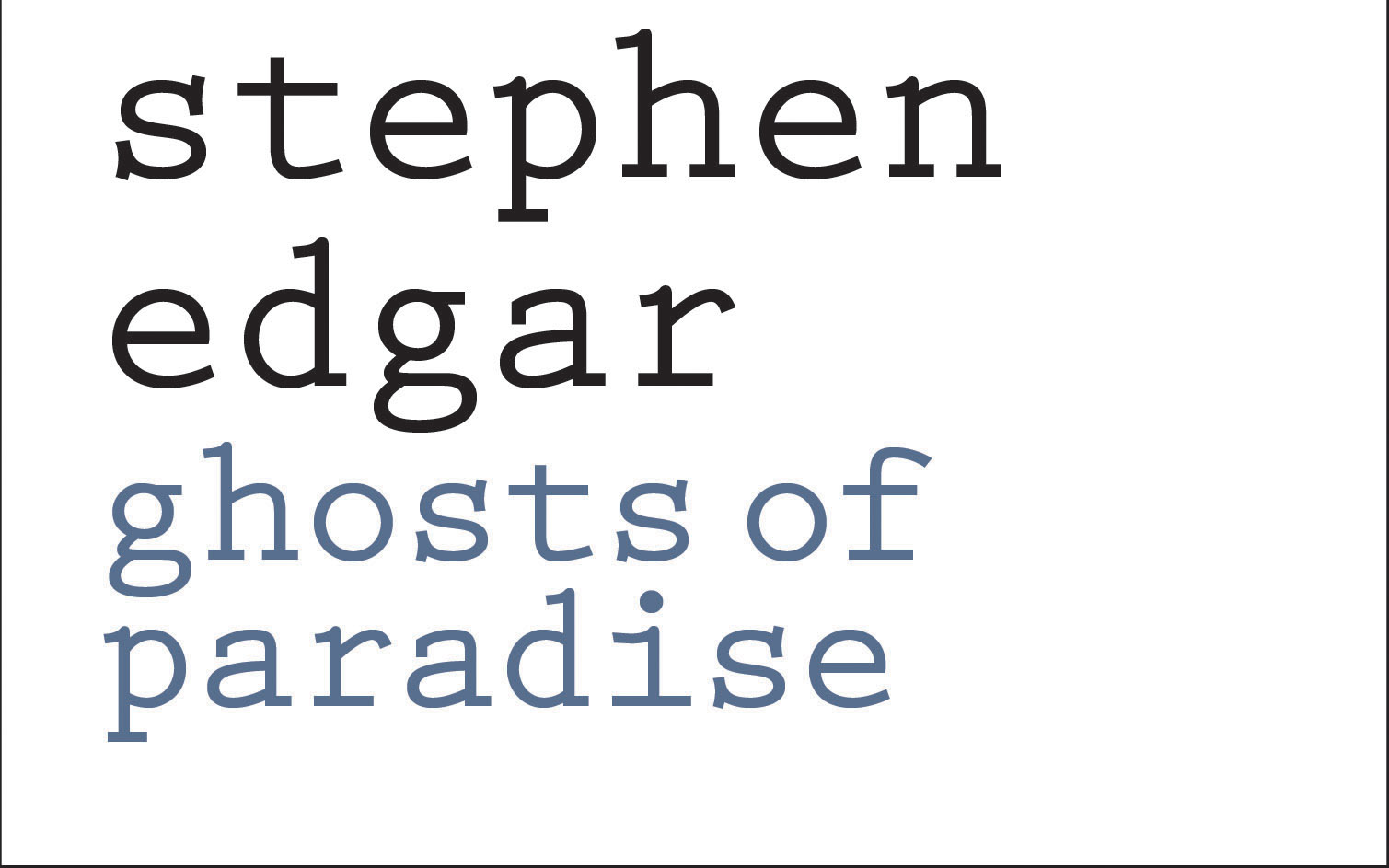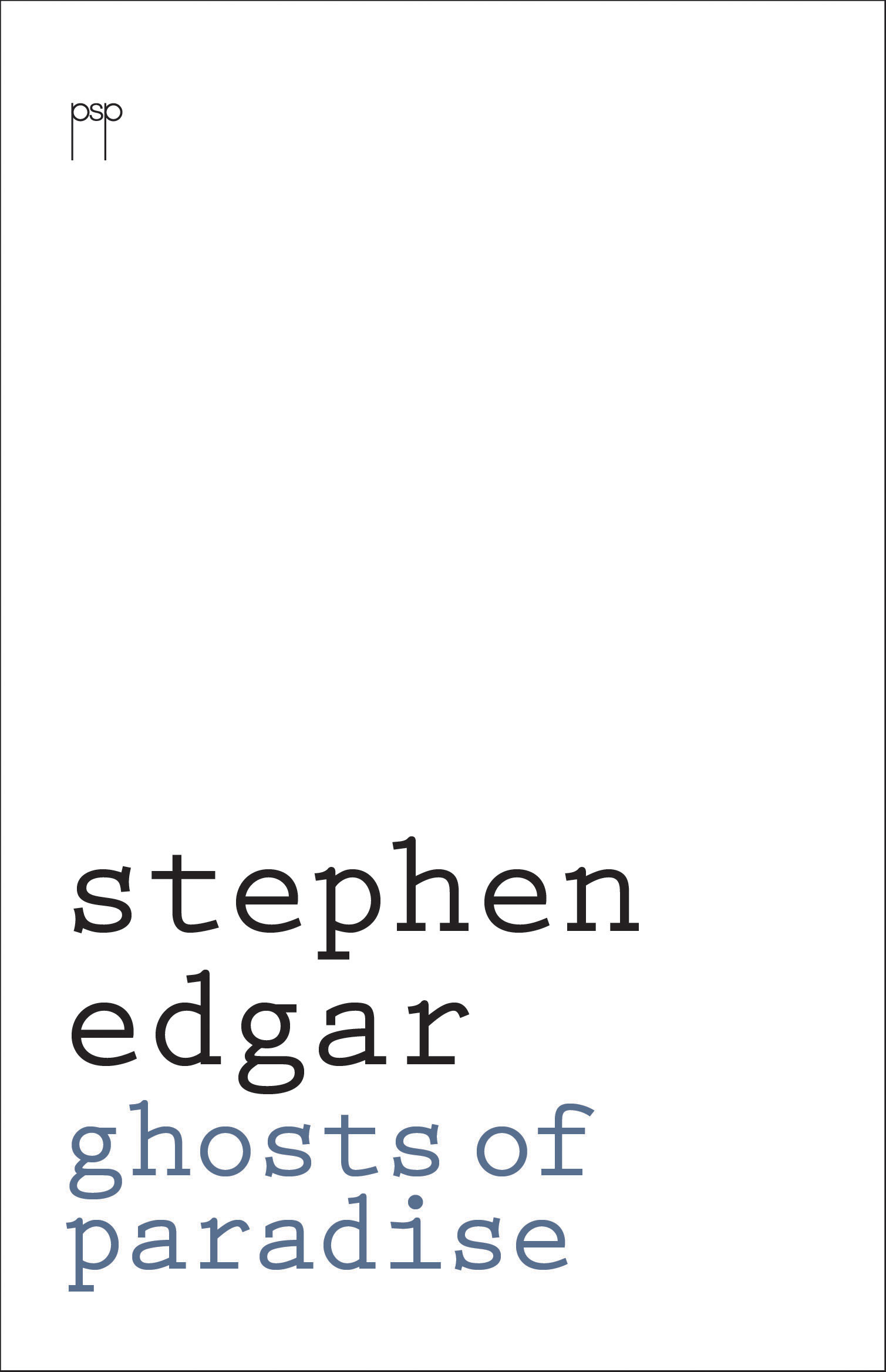
- Free Article: No
- Contents Category: Poetry
- Review Article: Yes
- Article Title: Ghosts and machines
- Article Subtitle: A collection haunted by loss and mutability
- Online Only: No
- Custom Highlight Text:
With a title like Ghosts of Paradise, it is no surprise that Stephen Edgar’s latest poetry collection is haunted by loss, mutability, and mortality – the great traditional themes of elegiac poetry. But Edgar’s poetry has long, if not always, been characteristically elegiac. In this new collection, Edgar’s first since winning the Prime Minister’s Award for poetry in 2021 (and his first for Pitt Street Poetry), the poems are haunted by the poet’s late parents, late fellow poets (especially W.B. Yeats, but also the Australian poet Robert Adamson, for whom there is an elegy), and ancient poetic forms, such as the sonnet. The collection also includes meditations on ageing, corpses, and photographs (including Roland Barthes’ ‘theory / That every photo is a memento mori’). An interest in the intertwining of memory, embodiment, and visual representation is powerfully realised in ‘Still Life’, in which the memory of a trip to Broken Hill is
- Featured Image (400px * 250px):

- Alt Tag (Featured Image): David McCooey reviews ‘Ghosts of Paradise’ by Stephen Edgar
- Book 1 Title: Ghosts of Paradise
- Book 1 Biblio: Pitt Street Poetry, $28 pb, 85 pp
- Book 1 Cover Small (400 x 600):

- Book 1 Cover (800 x 1200):

An illustrated history of roadkill,
Truck-smacked and mangled kangaroos, all pulp
And gore, as though some surgeon hoped to find,
There in the guts, the spark
Of life. That Rembrandt painting comes to mind.
The body peeled apart by Dr Tulp.
The long path from ‘pulp’ to ‘Tulp’ is a typically Edgarian payoff, even if (as it is in this case) the rhyme is an eye rhyme. In ‘Second Circle’, Edgar even more wittily, almost rhymes ‘sable’ (the French word for sand) with ‘marble’.
The mix of elegiac concerns with formal wit has long been one of the great pleasures found in reading Edgar’s poetry. In this new collection, the tension between gravity and playfulness is as strong as ever. Playfulness is especially seen in Edgar’s characteristically skilful use of stanza forms. The poems of Ghosts of Paradise seem to respire in stanzas, employing couplets, nonets, and everything in between. It is no mean feat to use stanza forms of six or more lines, often with complicated rhyme schemes, and Edgar does so with his usual aplomb. And while his use of traditional forms (the sonnet, the villanelle) is assured, his use of nonce, or invented, forms shows him at his most ingenious.
While it is easy to recognise Edgar as a formalist, what is perhaps more interesting is how he balances modes of stylisation that call attention to themselves (like stanza forms) with those that don’t. Edgar’s use of rhyme is often ‘dialled down’ by the skilful use, as we have already seen, of half-rhyme. Equally notable is his use of enjambement, which is far more prominent than his use of end-stopped lines. Most of the poems in Ghosts of Paradise play off the formal tension between the line (the basic unit of poetry) and the sentence (the basic unit of prose). The snaking syntax of Edgar’s sentences slides artfully through the fixed forms that he, or tradition, demands of his stanzas. For instance, in ‘The Hotel Idéal Séjour’ (a poem in response to R.F. Foster’s biography of Yeats), Edgar gives the following thumbnail sketch of the Irish poet:
The affectations – pince-nez, velvet coat,
The compulsion to project and dramatize
His role in history: did my play send out
Certain men … etcetera? Not through plays
Alone, but daily to control the plot
Of every clique and coterie and cause,
And then the increasing tendency to mix
With the upper class, the right-wing politics.
In addition to the enjambment, here, again, we see the skilful and playful use of half-rhyme, underscored by the stanza ending with the ‘mosaic rhyme’ of ‘mix’ and ‘politics’, with mosaic rhyme occupying a space somewhere between full rhyme and imperfect rhyme. The rest of the poem shows how Edgar, in his engagement with literary biography, can offer us a masterclass in rhyme and enjambement.
We see a similar bringing together of stylisation and plainness in Edgar’s lexis (or word choice), so that his habitual use of everyday language within formal constraints is occasionally studded with obscure or outré terms. We see this from time to time in Edgar’s evocations of the material world, as in the reference to ‘the swale / Down there, still soggy from the rains’ (in ‘Meanwhile’), or ‘the nictating membrane of a bird’ (in ‘Eye of the Storm’). Edgar is less fond of obscure words than, say, W.H. Auden, but his use of them is notable, nevertheless.
This careful interest in calibrating the effects of stylisation is consistent with Edgar’s formal concerns. In part, this is because Edgar is unembarrassed by poetry’s status as a linguistic technology. It is perhaps odd that so many writers concerned with poetry (and language more generally) as a medium – poets often described as ‘postmodern’ – are often so uninterested in metre, rhyme, and stanza forms, since those things are the very stuff of poetry’s linguistic self-consciousness. But all art forms struggle with the question of what to do with modes and techniques that are perceived to be ‘outdated’. Simple rejection or amnesia is one response to the problem; embracing and revising is another.
The revisionary impulse is, of course, consistent with the elegiac mode that we started with – returning to what has been, and then seeing it anew. But it is also consistent with another theme found within Ghosts of Paradise: the tension between the real and the mediated. This theme, central to ‘Still Life’ quoted above, relates to the revisionist sensibility in as much as it allows the contemporary poet to re-engage with historical representations of the real and the imagined. Such a re-engagement is perhaps most conspicuously at play in ‘The Ghost in the Machine’. This poem takes in not just the eponymous term (made famous by Arthur Koestler), but also the film Blade Runner 2049, and Emily Dickinson’s poem number 341 in its consideration of ‘This presence you’re possessed by, screen or filter / Shifting behind your eyes, through which must pass / All you appear to see’. Such an interest in philosophy, in the mediated nature of all things, is consistent with Edgar’s deep investment in form and poetry’s traditional modes of stylisation.
Embracing the supposedly ‘outmoded’ can be the paradoxical pathway to becoming cutting edge again, as illustrated, for instance, by the American composers – such as Steve Reich and Philip Glass – who in the 1970s re-embraced traditional Western harmony in the wake of modernism. I am not sure if Edgar, having hoed his particular path for over three decades, is interested in being ‘cutting edge’. Rather, like the legendary Argentinian writer Jorge Luis Borges (some of whose poetry Edgar has translated), he gifts us works that are both ‘traditional’ and ‘modern’, in poems that are simultaneously sensuous and cerebral, unadorned and baroque. Like Borges, Edgar also believes in the fundamental power of the poetic image, a power that is perhaps inherently melancholy, as seen in the elegiac memory of a long-lost sunset (as remembered in ‘Last Will and Retrospect’): ‘watching the sky entrance / The river surface in the evening’s lull, / Under the slow advance / Through pink and crimson of dissolving grey’.


Comments powered by CComment